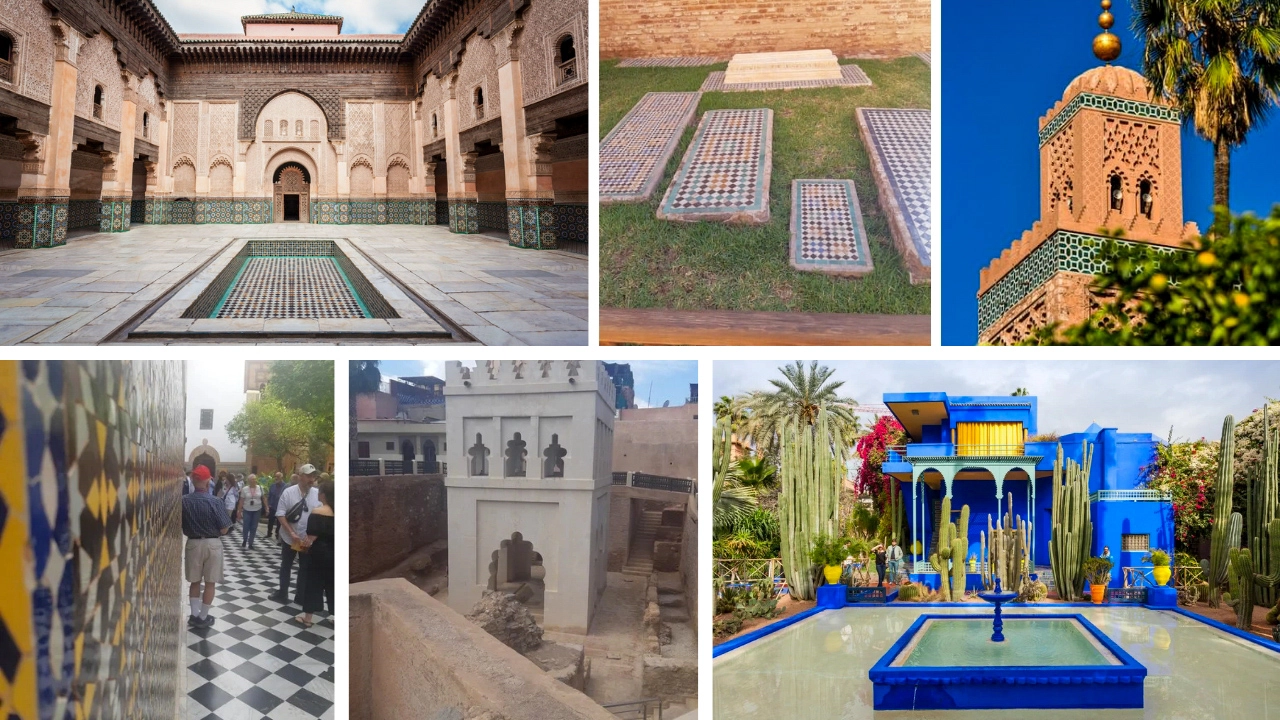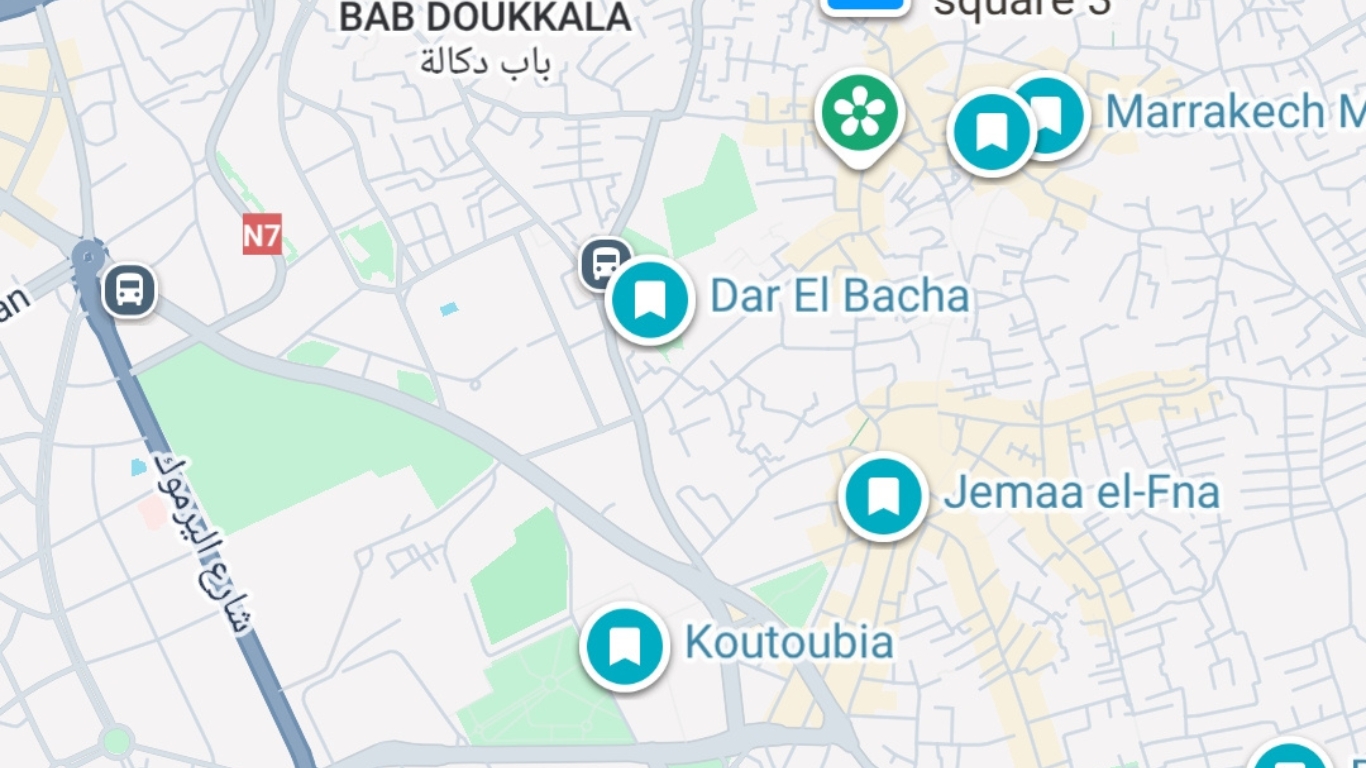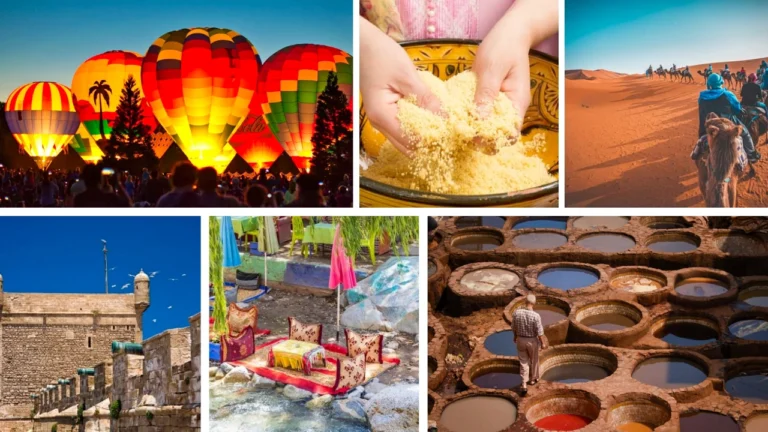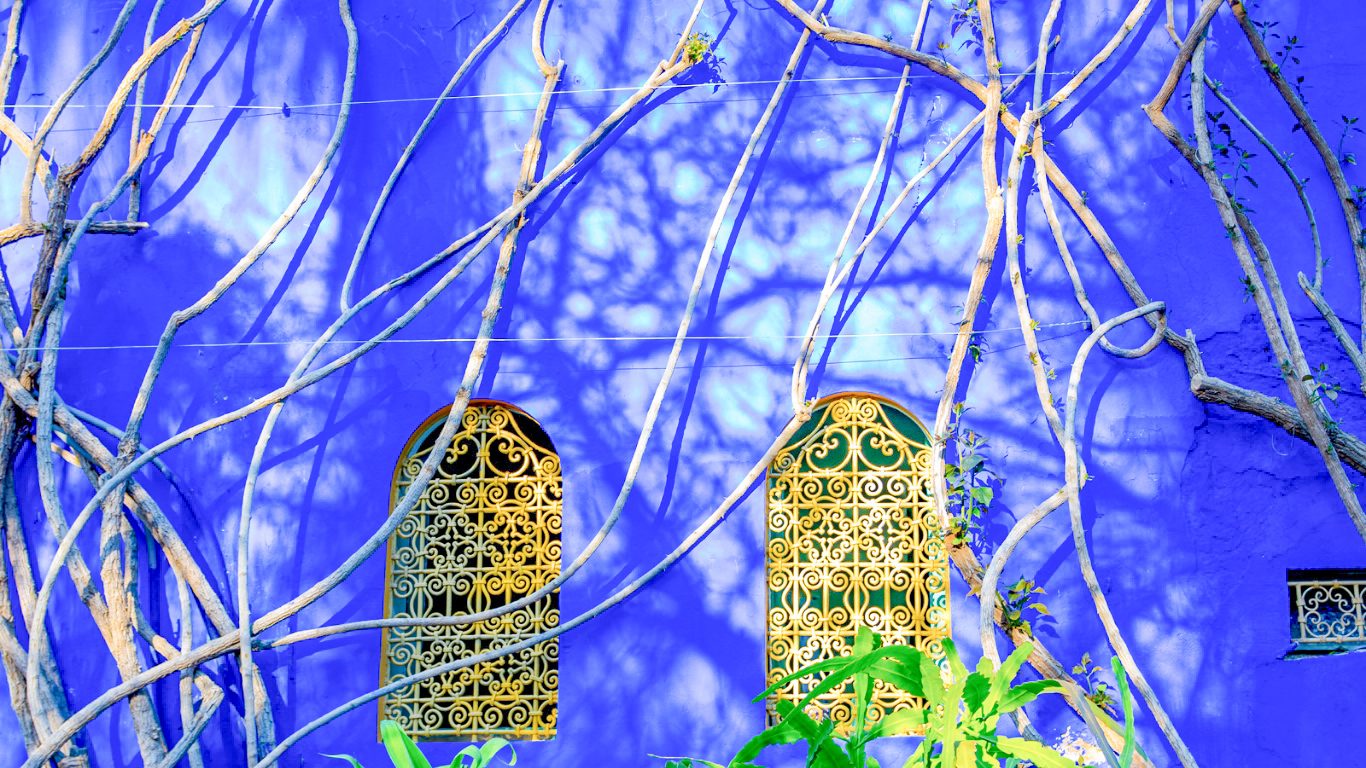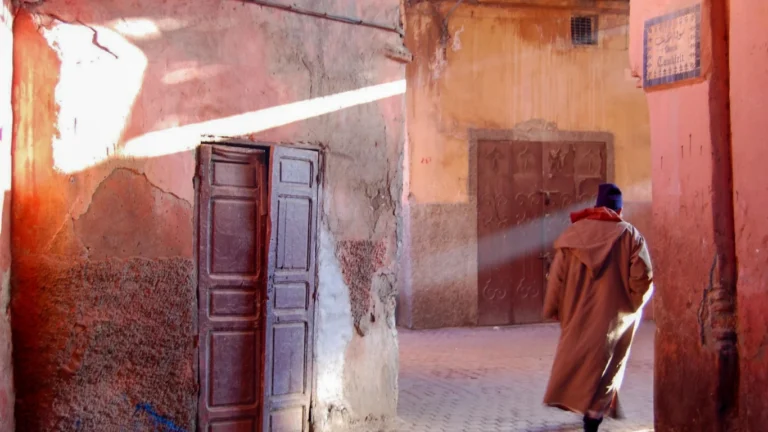10 Must-See Historical Gems in Marrakech (Map + Local Tips!)
If you’re looking to immerse yourself in the rich tapestry of Marrakech’s past, you’ve come to the right place.
As a local who has lived in Morocco my entire life, I bring firsthand experience and insights into the vibrant culture and hidden gems of Marrakech.
In this article, we’ll be exploring the top 10 historical sites that will transport you back in time and give you a glimpse into the vibrant history of this enchanting city.
From ancient palaces to bustling markets, Marrakech is a treasure trove of historical wonders just waiting to be discovered.
So grab your camera and get ready for an unforgettable journey through time!
Jemaa el-Fnaa at Night: A Local’s Guide to the Square’s Magic
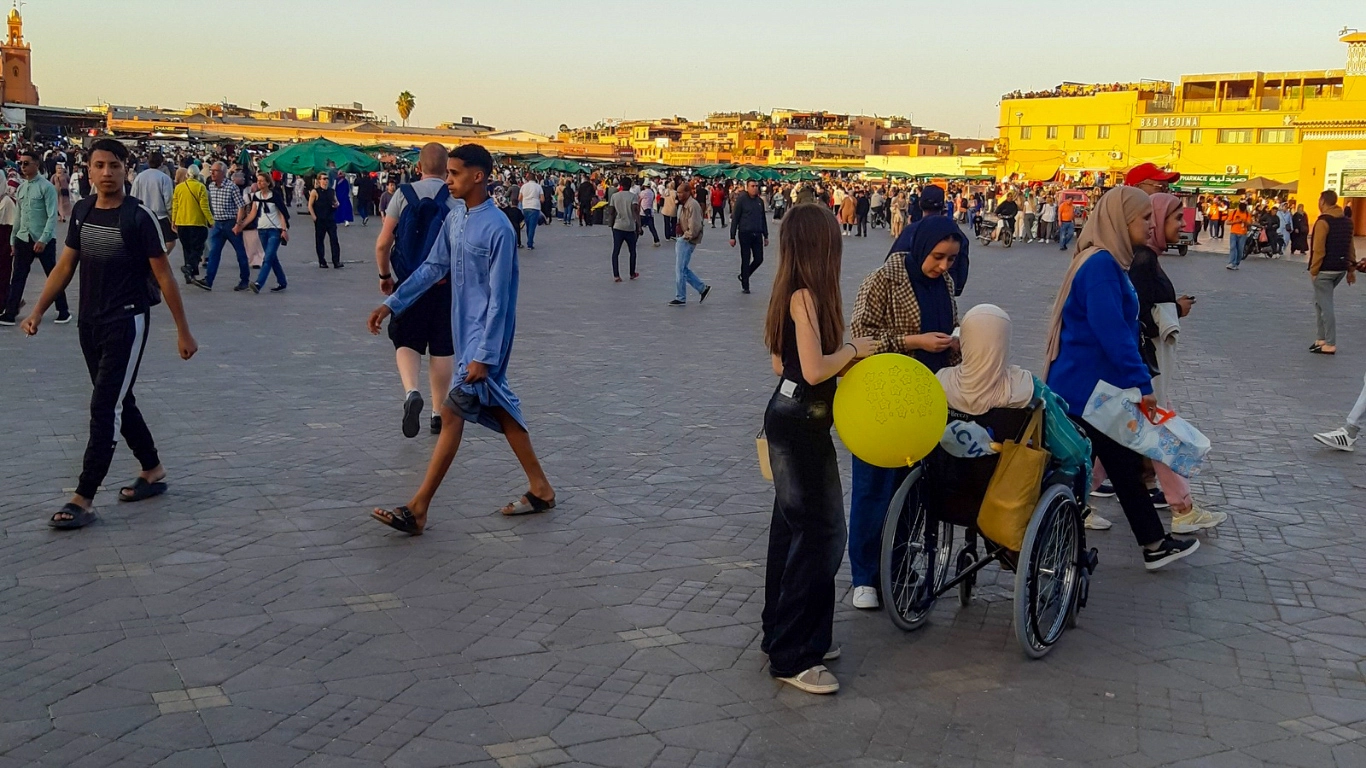
Jemaa el-Fnaa is a vibrant square located in the heart of Marrakech, and it is one of the most prominent tourist attractions in Morocco.
It attracts visitors with its unique atmosphere and rich culture. Here are some key details to help you plan your visit:
History
Jemaa el-Fnaa Square was established in the 11th century and has been a commercial and cultural center since then.
Over time, it has transformed into a meeting point for people from various backgrounds, making it a symbol of Moroccan heritage.
Available Activities
Art Performances: Enjoy traditional music and dance performances.
Food Tasting: Many stalls and restaurants are offering delicious Moroccan dishes.
Shopping: You can buy handicrafts and souvenirs from local vendors.
Enjoying the Atmosphere: Relax and watch the daily life in the square.
Opening Hours
Jemaa el-Fnaa is open 24/7, but activities and performances are more vibrant in the evening.
Address
Jemaa el-Fnaa, Marrakech, Morocco.
Entry Fees
Entry to the square is free, but you may need to pay fees for certain activities or performances.
How to Buy a Ticket
There are no tickets required for entry to the square, but you can purchase tickets for specific activities or performances you wish to attend.
How to Get There
Jemaa el-Fnaa can be easily reached on foot from most hotels in central Marrakech, or you can use local taxis.
Best Times to Visit
The best times to visit Jemaa el-Fnaa are in the evening when the atmosphere is more lively with performances and night markets.
Nearby places
Souks of Marrakech (302 m)
Koutoubia Mosque (447 m)
Dar Si Said (597 m)
Marrakech Museum (632 m)
Ben Youssef Madrasa (741 m)
Don’t miss Jemaa el-Fnaa; its lively atmosphere and delicious food will make your trip unforgettable!
Best Services for an Unforgettable Trip
Airport Transfers
Private and comfortable transfers for the same price as a taxi — just $15!
Book NowBahia Palace Guide 2025: Tickets, Hours & Insider Tips
Bahia Palace in Marrakech is a prominent historical landmark, showcasing traditional Moroccan architecture.
Built in the 19th century for Minister Abu Ahmed Bahia, it features a unique blend of Islamic and Andalusian styles, with stunning gardens and intricately decorated rooms.
A visit offers a glimpse into Morocco’s rich history and traditional arts. Here are some key details to help you plan your visit:
History
Bahia Palace is a historical site built in the 19th century (1880) by Moroccan minister Abu Ahmed Bahia.
It reflects traditional Moroccan architecture and is distinguished by its unique design and beautiful gardens.
Available Activities
Exploring the Gardens: You can stroll through the beautiful gardens and enjoy the trees and plants.
Visiting the Rooms: Explore the decorated rooms adorned with traditional art.
Photography: The palace is a great place for capturing stunning photos due to its architectural beauty.
Opening Hours
Open daily from 9:00 AM to 5:00 PM.
Address
Bahia Palace, Marrakech, Morocco.
Entry Fees
The ticket price for Bahia Palace on the official website is 70 dirhams (7 USD).
How to Buy a Ticket
1. Check if Bahia Palace has an official website for online ticket purchases.
2. You can buy tickets directly at the entrance when you arrive.
3. Some travel agencies in Marrakech may offer tickets as part of guided tours.
Book with confidence! Free cancellation up to 24 hours before your tour with GetYourGuide.
How to Get There
You can reach Bahia Palace by walking from Jemaa el-Fnaa Square or by taking a taxi.
Best Times to Visit
It is best to visit Bahia Palace in the early morning or late afternoon to avoid crowds and the heat.
Nearby places
Dar Si Said (248 m)
Badi Palace (480 m)
Souks of Marrakech (734 m)
Saadian Tombs (766 m)
Jemaa el-Fnaa (828 m)
We wish you a delightful visit filled with wonderful discoveries!
Majorelle Garden: Why This Is Marrakech’s Most Booked Attraction
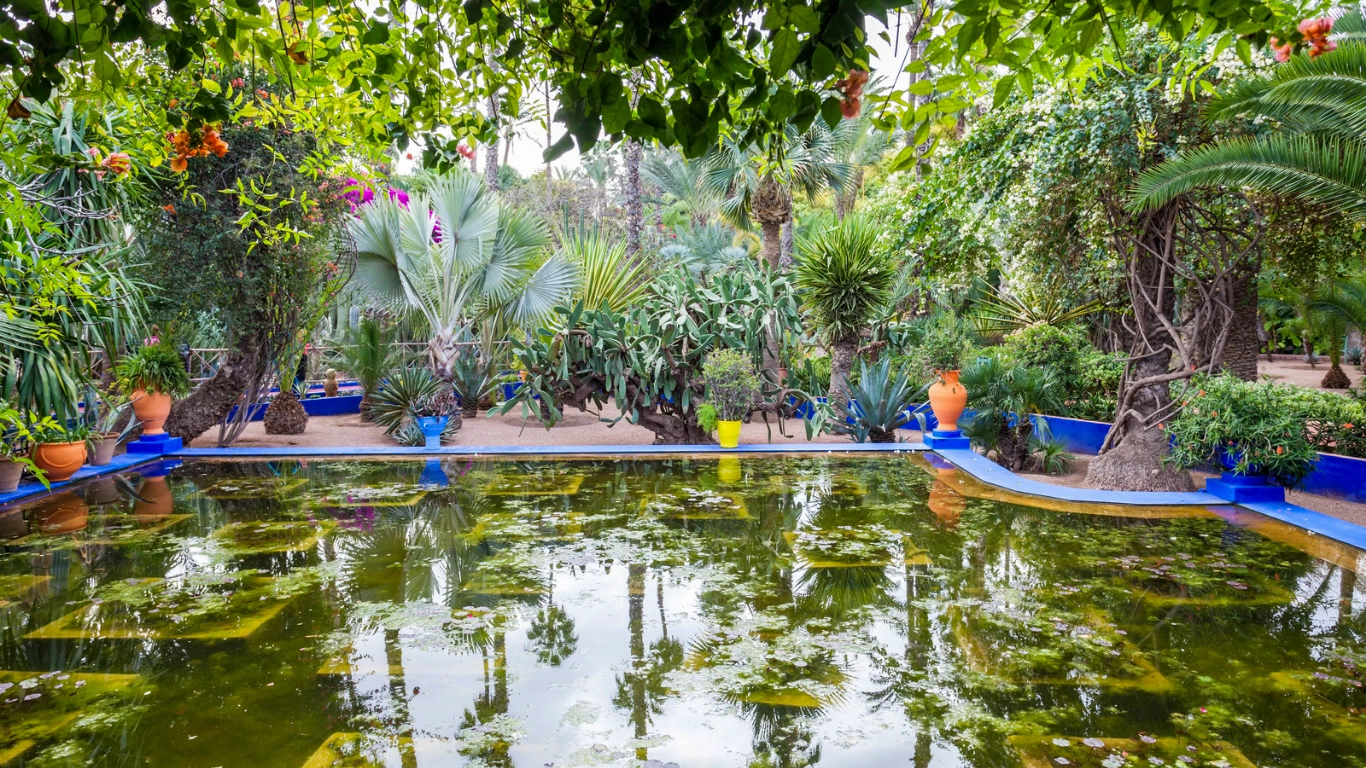
Majorelle Garden is one of the most beautiful destinations in Marrakech, combining the beauty of nature with artistic design.
Established in the early 20th century, it is renowned for its diverse plant life and vibrant colors.
Visitors can enjoy a variety of activities and unique facilities, making it an ideal spot for relaxation and exploration.
Here are some key details to help you plan your visit:
History
Founded in 1924 by French artist Jacques Majorelle, the garden has become a sanctuary of rare plants and colors, now owned by the Yves Saint Laurent Foundation.
Available Activities
Explore the Plants: Discover a wide variety of rare plants.
Photography: Capture beautiful images of the colors and design.
Visit the Museum: Explore the museum dedicated to Yves Saint Laurent.
Relaxation: Enjoy the tranquil atmosphere of the garden.
Café: Relax at the garden café, offering a selection of refreshments and light meals in a picturesque setting.
Opening Hours
Open daily from 8:30 AM to 6:00 PM.
Address
Jardin Majorelle, 27 Rue Yves Saint Laurent, Marrakech, Morocco.
Entry Fees
The ticket price for Majorelle Garden on the official website is 170 dirhams (17 USD).
Children under 12: Free entry.
How to Buy a Ticket
1. Check if Majorelle Garden has an official website for online ticket purchases.
2. Some travel agencies in Marrakech may offer tickets as part of guided tours.
Thousands of unique tours & activities – explore the world with GetYourGuide!
How to Get There
Easily accessible by taxi or public buses, located near the Gueliz neighborhood, making it a convenient stop.
Best Times to Visit
Spring: When the colors are at their peak.
Early Morning: To avoid crowds and enjoy a peaceful atmosphere.
Nearby places
Marrakech’s New City of Gueliz (1.1 km)
Ben Youssef Madrasa (1.8 km)
Marrakech Museum (1.9 km)
Koutoubia Mosque(2.1 km)
Jemaa el-Fnaa (2.1 km)
May your visit to Jardin Majorelle be filled with inspiration and tranquility.
Majorelle Garden Tickets Guide: Can You Buy Them on the Day?
Ben Youssef Madrasa: Inside the Medieval Islamic School
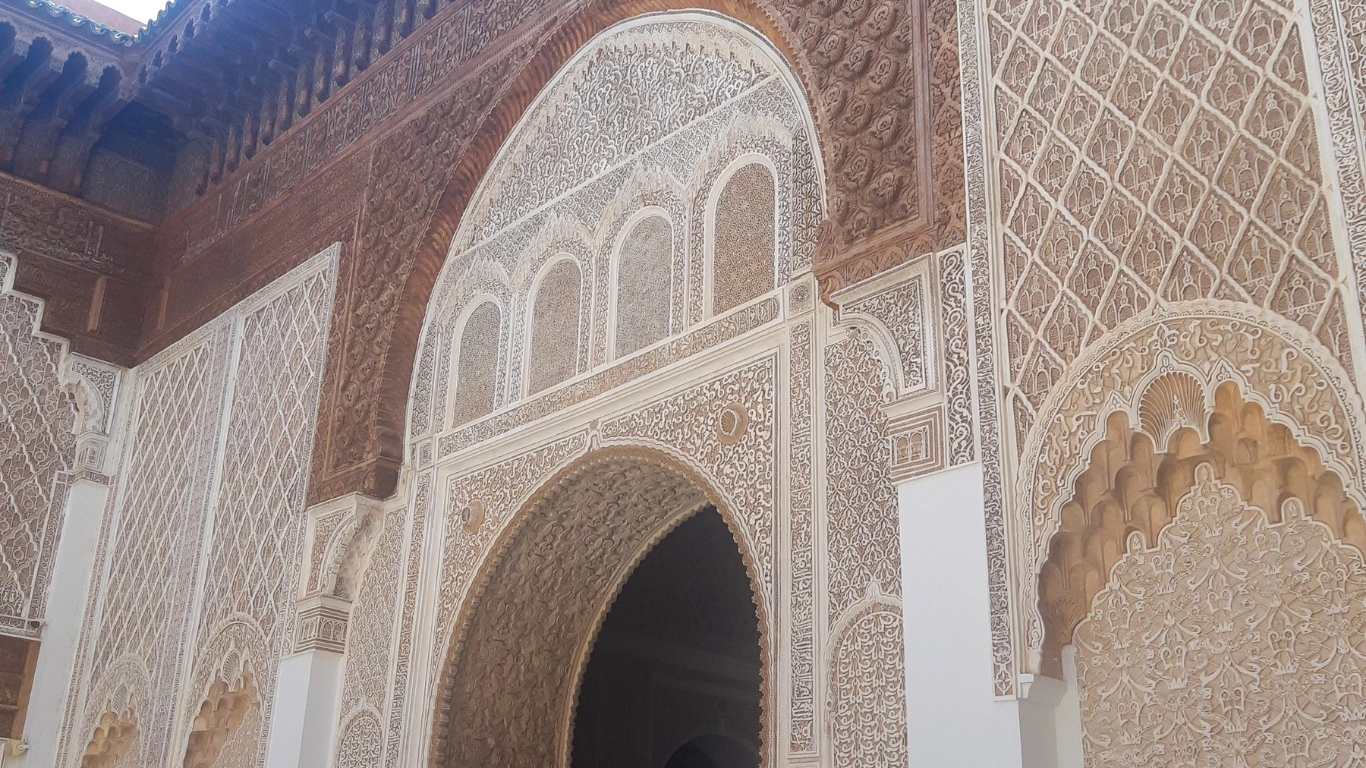
Ben Youssef Madrasa is one of the most beautiful historical landmarks in Marrakech, showcasing stunning Islamic architecture and the city’s rich history.
Established in the 14th century, it served as an important center of education in the Islamic world.
Here are some key details to help you plan your visit:
History
Founded in 1346, the Ben Youssef Madrasa is one of the largest schools in North Africa. It hosted many students from various parts of the Islamic world and emerged as a significant educational and cultural center.
Available Activities
Courtyard Exploration: Explore the beautiful courtyard and intricate architectural details.
Students’ Rooms Visit: Visit the students’ rooms, which reflect how scholars lived during that era.
Photography Opportunities: Take stunning photos in the picturesque surroundings.
Opening Hours
Open daily from 9:00 AM to 5:00 PM.
Address
Ben Youssef Madrasa, Rue Ben Youssef, Marrakech, Morocco.
Entry Fees
The ticket price for Ben Youssef Madrasa on the official website is 50 dirhams. (5 USD)
Children under 12 years old (1 USD)
How to Buy a Ticket
1. Check if Ben Youssef Madrasa has an official website for online ticket purchases.
2. You can buy tickets directly at the entrance when you arrive.
3. Some travel agencies in Marrakech may offer tickets as part of guided tours.
Choose the best experiences based on real traveler reviews – only on GetYourGuide.
How to Get There
You can reach the madrasa by foot from Jemaa el-Fnaa in about 15 minutes.
Tuk-tuks are great for navigating the narrow Medina alleys.
Taxis cannot enter the narrow streets, but they can drop you off nearby.
Best Times to Visit
The best time to visit the Ben Youssef Madrasa is early in the morning or late in the afternoon to avoid crowds and enjoy a quieter experience.
Visiting during spring or autumn is ideal due to the mild weather.
Nearby places
Marrakech Museum (111 m)
Souks of Marrakech (551 m)
Jemaa el-Fnaa (741 m)
Dar Si Said (996 m)
Koutoubia Mosque (1.1 km)
Don’t miss the opportunity to explore this remarkable landmark during your visit to Marrakech!
El Badi Palace Marrakech: The ‘Unrivaled’ 16th-Century Ruins (Why It’s Worth It!)
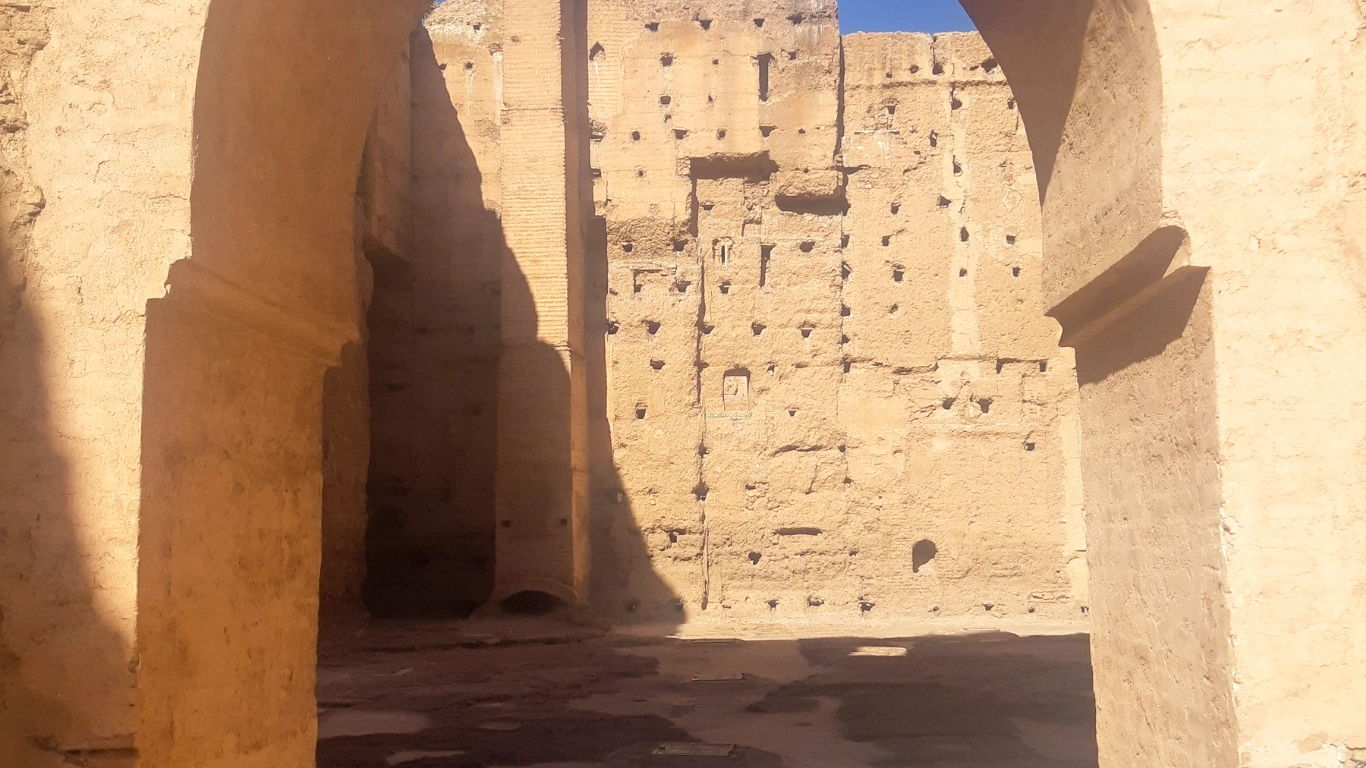
Badi Palace in Marrakech, Morocco, is a historic site built in the 16th century by Sultan Ahmed al-Mansur.
Known for its stunning architecture, the palace symbolizes the wealth of the Saadian dynasty.
Although partially in ruins, it remains a captivating destination, showcasing Morocco’s rich heritage.
Here are some key details to help you plan your visit:
History
Badi Palace was built in the 16th century by the Saadian Sultan Ahmed al-Mansur.
It is a symbol of Moroccan architecture and was designed to be an opulent palace reflecting power and wealth.
It was partially destroyed in the 17th century after the fall of the Saadians, but it still represents a magnificent example of Islamic architecture.
Available Activities
Guided Tours: Explore the palace and learn about its history through guided tours.
Photography: The site is perfect for taking photos due to the beauty of its architecture and gardens.
Exhibitions: The palace hosts art and cultural exhibitions that reflect Moroccan heritage.
Opening Hours
Open daily from 9:00 AM to 5:00 PM.
Address
Badi Palace, Marrakech, Morocco.
Entry Fees
The ticket price for Badi Palace on the official website is 100 dirhams (10 USD).
How to Buy a Ticket
1. Check if Badi Palace has an official website for online ticket purchases.
2. You can buy tickets directly at the entrance when you arrive.
3. Some travel agencies in Marrakech may offer tickets as part of guided tours.
How to Get There
Walking: The palace is easily accessible by foot from the city center (the old city).
Public Transport: You can use taxis or local buses to reach the area.
Best Times to Visit
Spring (March to May): When the weather is mild.
Autumn (September to November): The weather is also pleasant with fewer visitors.
It’s advisable to avoid summer, as temperatures can be very high.
Nearby places
Saadian Tombs (301 m)
Bahia Palace(480 m)
Dar Si Said (583 m)
Jemaa el-Fnaa (914 m)
Koutoubia Mosque (965 m)
Embrace the magic of Badi Palace and let its history inspire your journey!
Saadian Tombs & Badi Palace: Combined Tour Guide
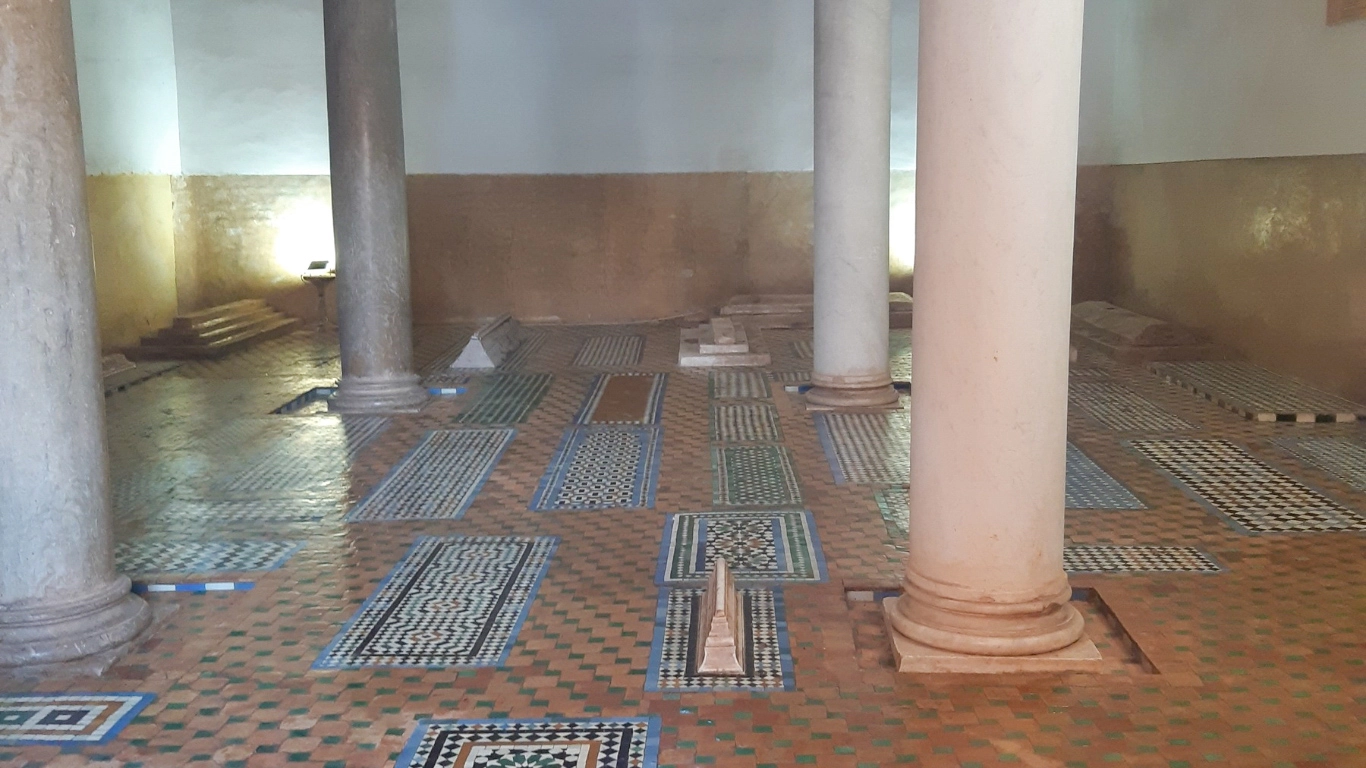
Saadian Tombs are located in Marrakech, Morocco, and are one of the famous tourist attractions that reflect the history of the Saadian dynasty, which ruled Morocco in the 16th and 17th centuries.
Here are some key details to help you plan your visit:
History
The tombs were established in the 16th century during the reign of Sultan Ahmad al-Mansur.
They contain the graves of many members of the Saadian royal family and were discovered in the early 20th century after a period of neglect.
Available Activities
1. Historical Graves Visit: Visit the historical graves to pay your respects and reflect on the lives of those buried there.
2. Architectural Exploration: Explore the stunning architectural decorations that showcase the unique style and craftsmanship of the era.
3. On-Site Photography: Take photos on-site to capture the beauty and significance of this remarkable location.
4. Informational Learning: Learn about the rich history through informative panels that provide insights into the site’s past and its cultural importance.
Opening Hours
Open daily from 9:00 AM to 5:00 PM.
Address
Saadian Tombs, Rue de la Coubba, Marrakech, Morocco.
Entry Fees
The ticket price for Saadian Tombs on the official website is 100 dirhams. (10 USD)
Children under 12 years old (1 USD)
How to Buy a Ticket
1. Check if Saadian Tombs has an official website for online ticket purchases.
2. You can buy tickets directly at the entrance when you arrive.
3. Some travel agencies in Marrakech may offer tickets as part of guided tours.
Get instant tickets & skip the lines – more exploring, less waiting with GetYourGuide!
How to Get There
Public Transport: You can use local buses or taxis.
Walking: The tombs are located in the center of Marrakech, making them easily accessible on foot from other tourist attractions.
Best Times to Visit
The best times to visit are early in the morning or in the late afternoon to avoid the intense heat, as well as during spring and autumn when the weather is mild.
Nearby places
Badi Palace (301 m)
Bahia Palace (766 m)
Dar Si Said (816 m)
Koutoubia Mosque (882 m)
Jemaa el-Fnaa (974 m)
Enjoy every moment in this historical gem, where the past meets the present in the enchanting embrace of Marrakech.
Dar El Bacha: Marrakech’s Overlooked Museum of Moroccan Art

Dar El Bacha is a historic palace located in the heart of Marrakech.
It is considered one of the city’s prominent tourist attractions, showcasing traditional architecture and Moroccan art.
Here are some key details to help you plan your visit:
History
Built in the 19th century as a residence for the local pasha, this palace reflects the rich cultural heritage of the city.
It features a unique architectural design and beautiful gardens.
Available Activities
Guided Tours: Visitors can enjoy tours that delve into the history and art of the palace.
Exploring the Gardens: The gardens offer a peaceful and beautiful atmosphere, ideal for relaxation.
Art Exhibitions: The venue hosts exhibitions of Moroccan arts and crafts.
Café: Enjoy refreshments at the museum café, which offers a lovely view of the gardens.
Opening Hours
Open daily from 9:00 AM to 5:00 PM. except Monday.
Address
Dar El Bacha, Medina, Marrakech, Morocco.
Entry Fees
The ticket price for Dar El Bacha on the official website is 70 dirhams. (7 USD)
How to Buy a Ticket
1. Check if Dar El Bacha has an official website for online ticket purchases.
2. You can buy tickets directly at the entrance when you arrive.
3. Some travel agencies in Marrakech may offer tickets as part of guided tours.
How to Get There
By foot, Dar El Bacha is easily accessible from the city center—enjoy a pleasant walk through the Medina.
Using mobile maps is advisable for easy navigation.
By taxi, you can be dropped off right at the entrance for a convenient and direct arrival.
Best Times to Visit
The best times to visit are early in the morning or late in the afternoon to avoid crowds and enjoy a quieter atmosphere.
Nearby places
Bahia Palace (1.2 km)
Souks of Marrakech (800 m)
Jemaa el-Fnaa (1 km)
Majorelle Garden (2.5 km)
Koutoubia Mosque (1.5 km)
Don’t miss the chance to explore Dar El Bacha, a true gem of Marrakech waiting to be discovered!
Koutoubia Mosque: Can Tourists Visit? (2025 Rules + Photos)
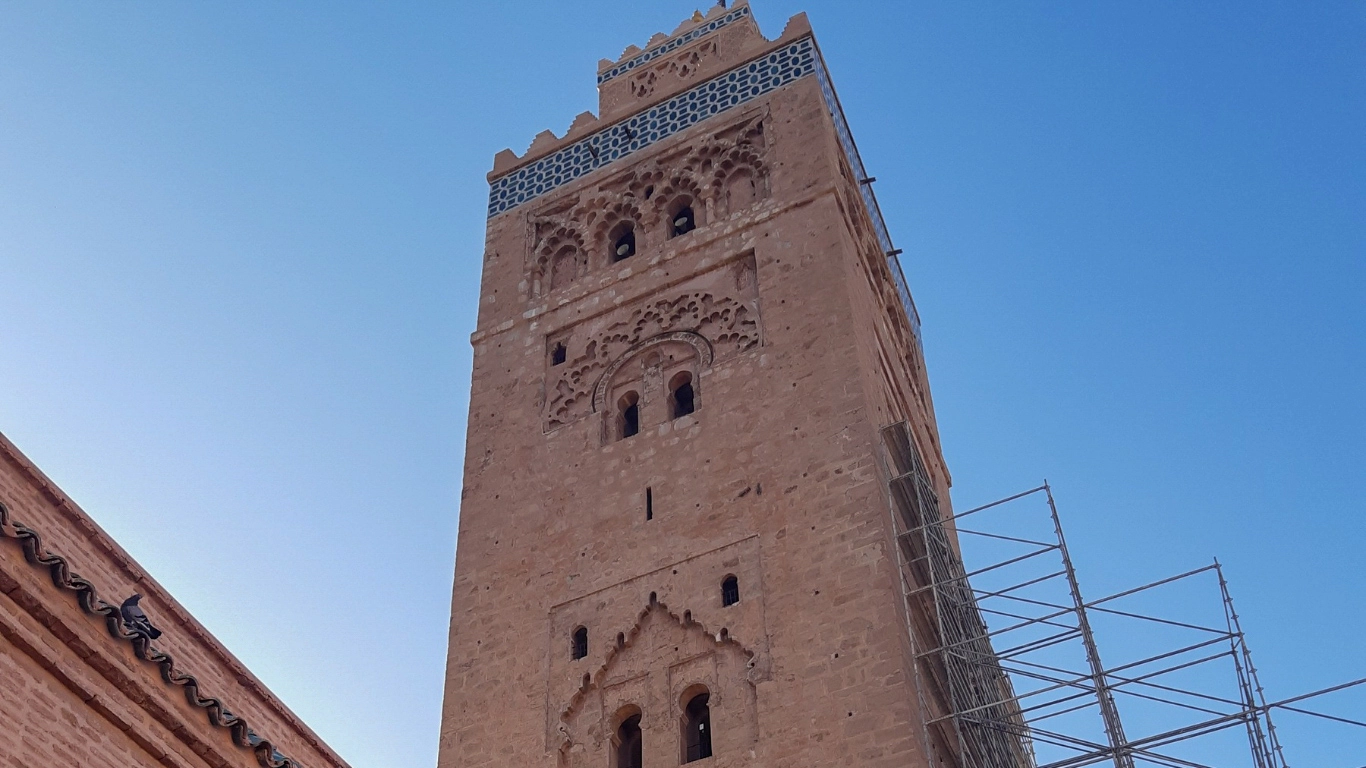
Koutoubia Mosque is one of the most significant historical landmarks in Marrakech, distinguished by its unique architecture and a minaret that reaches a height of 77 meters.
The mosque is a symbol of the city and reflects Morocco’s rich Islamic culture.
Here are some key details to help you plan your visit:
History
The mosque was founded in the 12th century (1147) by Sultan Abd al-Mu’min.
It was built on the ruins of an earlier mosque and is considered a magnificent example of Moroccan architecture.
The minaret was designed with precision and showcased the influence of Andalusian architecture.
Available Activities
Visiting the Landmark: Visitors can explore the mosque’s courtyard and admire its architectural features.
Photography: The mosque is a great spot for capturing beautiful photos.
Strolling in the Surrounding Gardens: Visitors can enjoy walking in the nearby gardens.
Opening Hours
The mosque is open to visitors throughout the day, but it’s preferable to visit the minaret during daylight hours.
Address
Koutoubia Mosque, Marrakech, Morocco.
Entry Fees
It’s free to take photos, but you cannot enter. Only Muslims are allowed to enter the Koutoubia Mosque.
How to Buy a Ticket
There is no need to purchase a ticket to enter the mosque, but it’s advisable to respect local customs and dress appropriately during your visit.
How to Get There
The mosque is easily reachable on foot from most tourist areas in Marrakech.
Taxis or public transport can also be used to get there.
Best Times to Visit
Early Morning: To avoid crowds and enjoy the tranquility.
Sunset: To witness the beautiful view of the minaret with the evening lights.
Nearby places
Jemaa el-Fnaa 447 m)
Souks of Marrakech (749 m)
Saadian Tombs (882 m)
Dar Si Said (914 m)
Badi Palace (965 m)
Be sure to visit the Koutoubia Mosque; its stunning architecture and serene atmosphere are unforgettable!
Marrakech Museum Near Ben Youssef: Why It’s Worth Your Time
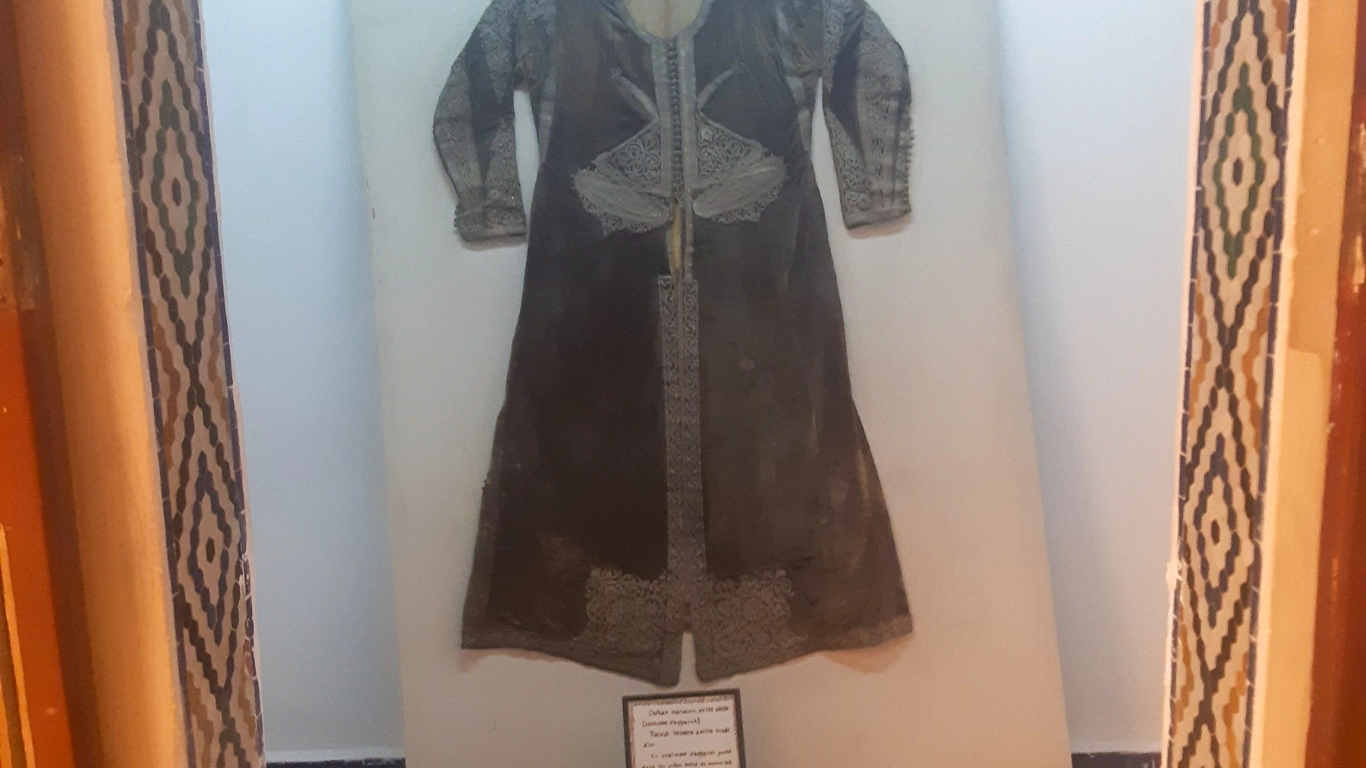
The Marrakech Museum is located in the heart of the Medina, just steps from the historic Ben Youssef Madrasa.
It is one of the city’s most important cultural institutions and a must-visit for anyone interested in Moroccan heritage.
History
Housed in the 19th-century Dar Menebhi Palace, the museum was originally the residence of Mehdi Menebhi, a former Minister of War under Sultan Moulay Abdelaziz.
In 1997, the palace was restored by the Omar Benjelloun Foundation and transformed into a museum showcasing the richness of Moroccan art and history.
Available Activities
Exhibitions: Explore collections of Moroccan ceramics, manuscripts, traditional jewelry, textiles, and contemporary art.
Architecture: Admire the stunning Andalusian-Moroccan architecture, especially the central courtyard decorated with zellige tiles, carved wood, and intricate stucco.
Cultural Events: The museum occasionally hosts concerts, art exhibitions, and cultural workshops.
Opening Hours
Daily from 9:00 AM to 6:30 PM
Address
Located near Ben Youssef Madrasa, in the old Medina of Marrakech.
Entry Fees
General Admission: 70 MAD (approximately 7 USD)
How to Buy a Ticket1. Tickets can be purchased at the museum entrance.
2. Some guided tours in the Medina include access to the museum.
3. Check online travel platforms for any available booking options.
How to Get ThereBy foot: A short walk from Jemaa el-Fnaa or Ben Youssef Madrasa.
By tuk tuk: By tuk-tuk: A fun and easy option for short distances within the Medina.
Taxis cannot enter the narrow streets, but they can drop you off nearby.
Best Times to Visit
Visit early in the morning or late in the afternoon to avoid crowds and enjoy the museum in a peaceful setting.
Spring and autumn offer the best weather.
Nearby Attractions
Ben Youssef Madrasa (120 m)
House of Photography (350 m)
Souks of Marrakech (500 m)
Bahia Palace (1 km)
Jemaa el-Fnaa Square (950 m)
Don’t miss the Marrakech Museum—it’s the perfect mix of history, art, and breathtaking architecture.
Marrakech’s Almoravid Koubba: Secrets of a 12th-Century Masterpiece
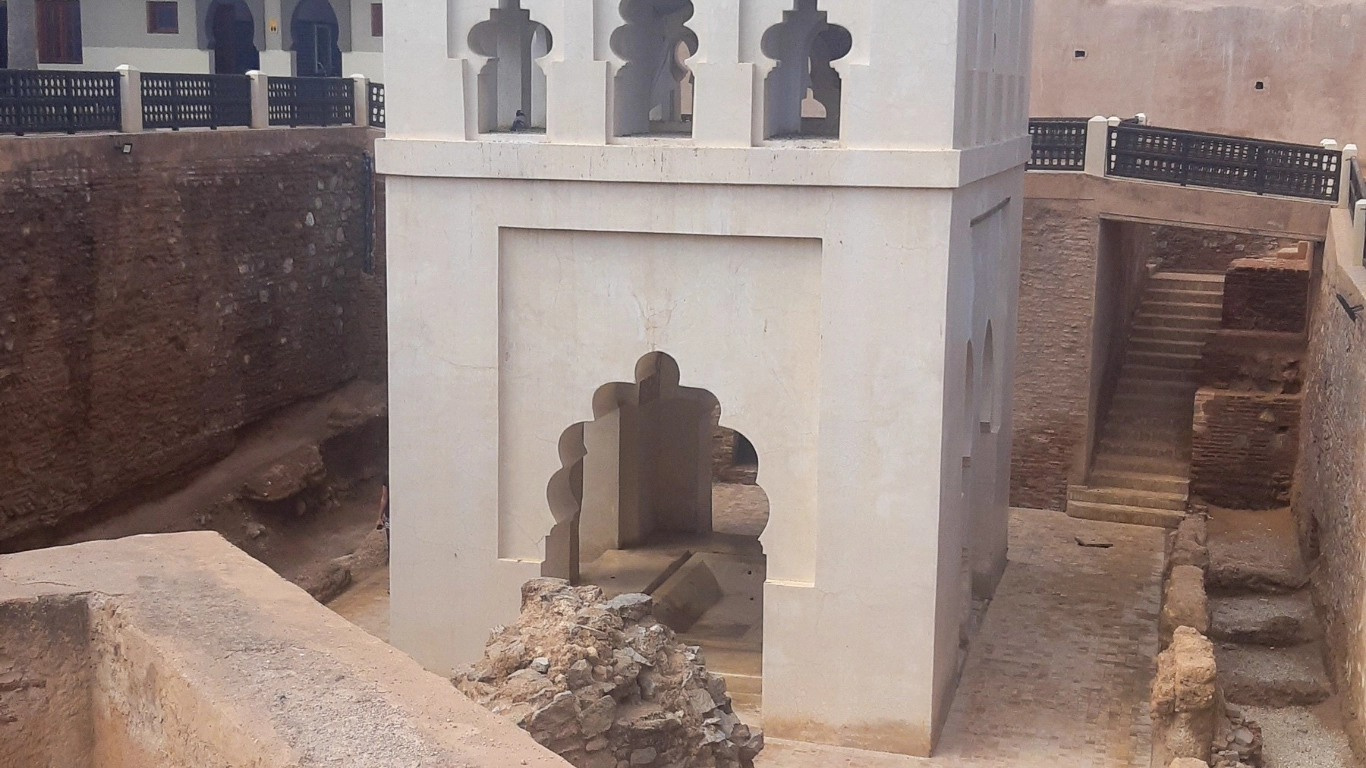
Almoravid Koubba is a historical monument located in the heart of Marrakech, near the famous Ben Youssef Madrasa and Marrakech Museum.
It is the only remaining example of Almoravid architecture in the city and offers a rare glimpse into Morocco’s architectural heritage.
Here are some key details to help you plan your visit:
History
The Almoravid Koubba was built in the early 12th century, during the reign of Ali Ben Youssef, a powerful ruler of the Almoravid dynasty.
It served as a ritual ablution pavilion (used for washing before prayer) for the nearby mosque that no longer exists.
The structure remained buried for centuries and was rediscovered and restored in the 20th century.
Available Activities
Architecture Viewing: Admire the unique blend of Andalusian and Almoravid styles, including intricate stucco work and Kufic inscriptions.
Photography: The Koubba is a favorite spot for photographers interested in Islamic architecture.
Learn about Islamic History: Educational panels and nearby guides provide insights into Almoravid contributions to the city’s development.
Opening Hours
Typically open daily from 9:00 AM to 5:00 PM, but it’s best to check locally for updates.
Address
Rue Assouel, near Ben Youssef Madrasa, Medina, Marrakech, Morocco.
Entry Fees
The entry fee is around 30 MAD (approximately 3 USD), often combined with a ticket to the Marrakech Museum or Madrasa.
How to Buy a Ticket
Tickets can be purchased at the entrance.
How to Get There
The Koubba is located in the Medina and is easily accessible by foot from Jemaa el-Fnaa (about 15–20 minutes).
Taxis drop off nearby, but tuk-tuks are recommended for navigating the narrow streets of the old city.
Best Times to Visit
Visit in the morning or late afternoon to avoid crowds and strong sunlight, which can hinder photography.
Spring and autumn are the most pleasant seasons for exploring historical sites in Marrakech.
Nearby Places
Ben Youssef Madrasa (72 m)
Marrakech Museum (52 m)
Souks of Marrakech (289 m)
Jemaa el-Fnaa (690 m)
Dar Si Said Museum (800 m)
Don’t miss the Almoravid Koubba—this hidden gem tells the forgotten story of one of Marrakech’s oldest dynasties.
Map of 10 Must-See Historical Gems in Marrakech (Just tap to explore)
Conclusion
In conclusion, Marrakech is a city rich in history and culture, with an abundance of historical sites that offer a glimpse into the past.
From the grandeur of the Bahia Palace to the intricate beauty of the Ben Youssef Madrasa, each site tells a unique story and showcases the incredible craftsmanship of Moroccan artisans.
Whether you’re exploring ancient ruins or wandering through bustling souks, Marrakech’s historical sites are sure to leave you in awe.
So next time you find yourself in this vibrant city, be sure to visit these top 10 historical sites and immerse yourself in the magic of Marrakech’s past.

